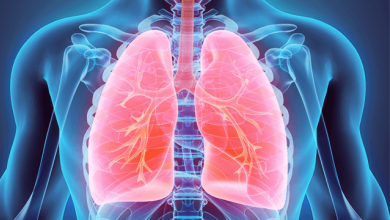Search results
Author(s):
Robert P Frantz
Added:
3 years ago
Pulmonary arterial hypertension (PAH) is a rare but life-threatening condition that has traditionally required treatment with continuous intravenous epoprostenol via an indwelling central catheter.1–3 Such therapy improves outcome, but is fraught with side effects, expense, and risk of catheter-related complications. Therapy of PAH has evolved tremendously in recent years, reflecting the…
View more
Author(s):
Jean-Luc Vachiéry
Added:
3 years ago
Prostacyclins in PAH - Pathobiological Rationale
Endothelial dysfunction is the cornerstone event in the pathobiology of pulmonary arterial hypertension (PAH), a rapidly evolving clinical syndrome of dyspnoea and fatigue eventually leading to right ventricular failure and death.1 In the pulmonary vascular bed, endothelial cells are the major source of mediators modulating pulmonary vascular tone…
View more
Author(s):
John G Coghlan
Added:
3 years ago
The pace of progress in the field of pulmonary arterial hypertension (PAH) continues to be breathtaking. In the past couple of years two new oral agents have been granted licences. Fourteen major international drug trials are underway, many evaluating the role of combination therapies, and at least three agents (simvastatin, imatinib and aviptadil) are undergoing proof of concept studies in…
View more
Author(s):
Nazzareno Galiè
Added:
3 years ago
The field of pulmonary arterial hypertension (PAH) has recently been characterised by rapid improvements in therapeutic options and corresponding improvements in patient outcomes. In 1991, estimates from the US Department of Health and Human Services National Institutes of Health (NIH) Registry painted a grim portrait of survival in patients with pulmonary hypertension – then called primary…
View more
Author(s):
Carmine Dario Vizza
,
Roberto Badagliacca
,
Roberto Poscia
,
et al
Added:
3 years ago
Abstract
Pulmonary arterial hypertension (PAH) is a serious and life-threatening condition for which the prognosis remains poor. Treatment options include endothelial receptor antagonists, phosphodiesterase (PDE5) inhibitors and prostanoids. Despite all demonstrating good short-term efficacy, none of the currently available drug therapies are curative. Treatment with prostanoids is complex and…
View more
Author(s):
Nazzareno Galiè
Added:
3 years ago
The field of pulmonary arterial hypertension (PAH) has recently been characterised by rapid improvements in therapeutic options and corresponding improvements in patient outcomes. In 1991, estimates from the US Department of Health and Human Services National Institutes of Health (NIH) Registry painted a grim portrait of survival in patients with pulmonary hypertension - then called primary…
View more
Author(s):
Robert Voswinckel
,
Ralph T Schermuly
,
Norbert Weissmann
,
et al
Added:
3 years ago
Pulmonary arterial hypertension (PAH) is a chronic, progressive disease defined by increasing pulmonary vascular resistance and pulmonary arterial pressure, ultimately leading to right heart failure. The life expectancy of patients with PAH who do not receive appropriate treatment is dramatically reduced. Guidelines for the diagnosis and treatment of PAH have been established by the American…
View more
Author(s):
Mariëlle GJ Duffels
,
Eric Boersma
,
Barbara JM Mulder
Added:
3 years ago
Congenital heart disease is the most common congenital malformation and accounts for about eight cases per 1,000 births.1 Due to tremendous developments in cardiac surgery, nearly 90% of all children with congenital heart disease reach adult age. In patients with congenital heart disease, pulmonary arterial hypertension (PAH) may develop due to increased pulmonary arterial flow as a result of a…
View more
Author(s):
Hossein-Ardeschir Ghofrani
,
Ralph Schermuly
,
Norbert Weissmann
,
et al
Added:
3 years ago
Pulmonary arterial hypertension (PAH) has an estimated prevalence of 15–25 cases/million population.1 This chronic, progressive disease is defined by a mean pulmonary arterial pressure >25mmHg in conjunction with normal pulmonary capillary wedge pressure <15mmHg.2 The disease is characterized by increased vascular resistance of the pulmonary microvasculature, ultimately resulting in right…
View more
Author(s):
Madelon C Vonk
Added:
3 years ago
Pulmonary arterial hypertension (PAH) is a common and fatal complication of connective tissue diseases (CTDs). By expert consensus, PAH is diagnosed when at right heart catheterisation a mean pulmonary arterial pressure (PAP) >25mmHg at rest or >30mmHg during exercise is measured, together with a normal wedge pressure and a normal or reduced cardiac output.1 The exact pathophysiological…
View more











